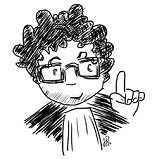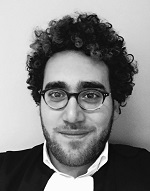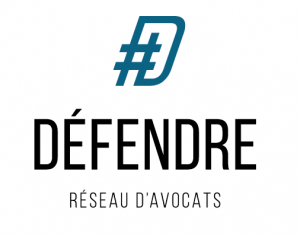Droit de communication au public : affaire Reha Training (C-117/15)

Une nouvelle série de questions préjudicielles a été adressée à la Cour de justice de l’Union européenne en matière de communication au public au sens de l’article 3, §1er, de la directive 2001/29 et au sens de l’article 8, §2, de la directive 2006/115.
Il s’agit de l’affaire Reha Training (C-117/15).
Les faits à l’origine de cette affaire peuvent être brièvement résumés comme suit :
- Il est question d’un centre de rééducation.
- L’exploitant de ce centre de rééducation installe dans ses locaux des appareils de télévision.
- L’exploitant de ce centre de rééducation envoie un signal vers ces appareils de télévision. Ce signal permet la réception d’émissions de télévision.
- Les personnes s’entraînant ou étant traitées dans ce centre de rééducation peuvent voir les programmes diffusés grâce à ces appareils de télévision.
Les questions posées par la juridiction allemande (Landgericht Köln) tendent, en substance, à savoir si, dans une telle configuration factuelle, il y a communication au public au sens de l’article 3, §1er, de la directive 2001/29 et/ou au sens de l’article 8, §2, de la directive 2006/115 :
« 1. Is the question as to whether there is a ‘communication to the public’ within the meaning of Article 3(1) of Directive 2001/29 and/or within the meaning of Article 8(2) of Directive 2006/115 always to be determined in accordance with the same criteria, namely that
– a user acts, in full knowledge of the consequences of its action, to provide access to the protected work to third parties which the latter would not have without that user’s intervention,
– the term ‘public’ refers to an indeterminate number of potential recipients of the service and, in addition, must consist of a fairly large number of persons, in which connection the indeterminate nature is established when ‘persons in general’ — and therefore not persons belonging to a private group — are concerned, and ‘a fairly large number of persons’ means that a certain de minimis threshold must be exceeded and that groups of persons concerned which are too small or insignificant therefore do not satisfy the criterion; in this connection not only is it relevant to know how many persons have access to the same work at the same time but it is also relevant to know how many of them have access to it in succession;
– the public to which the work is communicated is a new public, that is to say, a public which the author of the work did not contemplate when he authorised its use by communication to the public, unless the subsequent communication uses a specific technical means which differs from that of the original communication; and
– it is not irrelevant that the act of exploitation in question serves a profit-making purpose and also that the public is receptive to that communication and is not merely ‘reached’ by chance, although this is not an essential condition for the existence of a communication to the public?
2. In cases such as that in the main proceedings, in which the operator of a rehabilitation centre installs television sets on its premises, to which it transmits a broadcast signal and thus makes it possible for the television programmes to be viewed and heard, is the question whether there is a communication to the public to be assessed according to the concept of ‘communication to the public’ under Article 3(1) of Directive 2001/29 or under Article 8(2) of Directive 2006/115 if the copyright and related rights of a wide range of persons concerned — in particular composers, songwriters and music publishers, but also performing artists, phonogram producers and authors of literary works as well as their publishing houses — are affected by the television programmes which have been made accessible?
3. In cases such as that in the main proceedings, in which the operator of a rehabilitation centre installs television sets on its premises, to which it transmits a broadcast signal and thus makes television programmes accessible to its patients, is there a ‘communication to the public’ pursuant to Article 3(1) of Directive 2001/29 or pursuant to Article 8(2) of Directive 2006/115?
4. If the existence of a communication to the public within this meaning is confirmed for cases such as that in the main proceedings, does the Court of Justice thereby uphold its case-law according to which no communication to the public takes place in the event of the radio broadcasting of protected phonograms to patients in a dental practice (see the judgment of 15 March 2012 in SCF, C-135/10) or similar establishments? »
Les réponses que la Cour de justice apportera à toutes ces questions seront intéressantes dès lors que :
- D’une part, dans l’affaire OSA (C-351/12), la Cour a confirmé l’existence d’actes de communication au public posés par l’exploitant d’un établissement thermal qui, opérant comme une entreprise commerciale, distribue délibérément un signal, dans les chambres des patients de son établissement, au moyen de récepteurs de télévision ou de radio – consolidant une jurisprudence constante ; voyez notamment les affaires : Phonographic Performance (Ireland) Limited (C-162/10) ; Organismos Sillogikis Diacheirisis Dimiourgon Theatrikon kai Optikoakoustikon Ergon (C-136/09) ; Rafael Hoteles SA (C-306/05).
- D’autre part, dans son arrêt Del Corso (C‑135/10), cette même Cour a refusé de qualifier d’acte de communication au public la « diffusion gratuite de phonogrammes dans un cabinet dentaire, tel que celui en cause au principal, dans le cadre de l’exercice d’une profession libérale, au bénéfice de la clientèle qui en jouit indépendamment de sa volonté ».
Il faut d’ailleurs observer que dans cette affaire Reha Training, il est expressément demandé à la Cour de justice d’indiquer si elle maintient, ou non, sa jurisprudence Del Corso.

Frédéric Lejeune, avocat au barreau de Bruxelles


